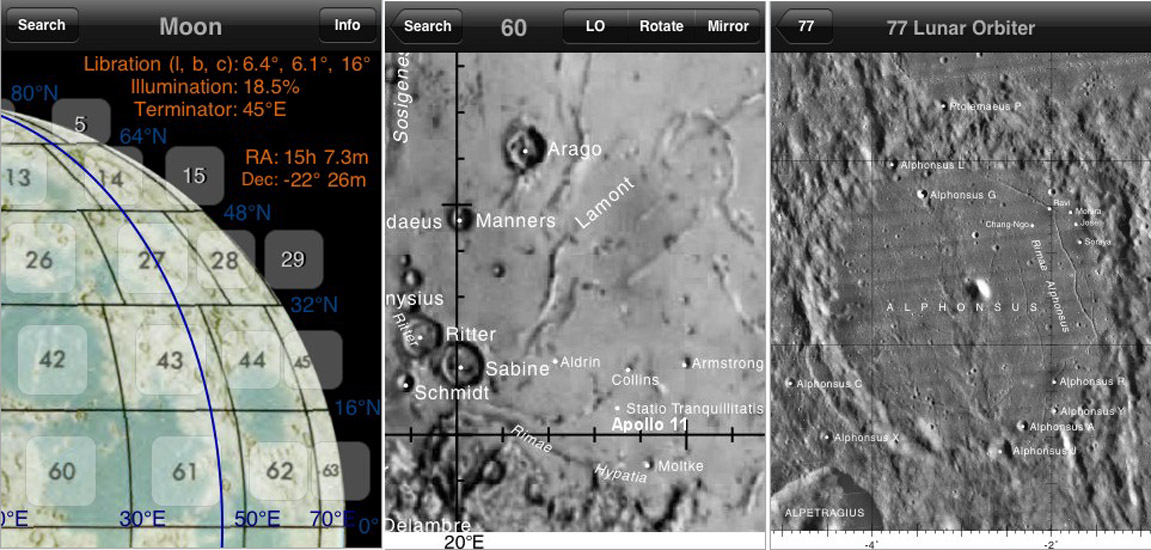October 18, 2009
The Moon in Your Hand

images from Moon Maps for iPhone & iPod Touch. (shown larger than lifesize)
I love my iPhone, it is the incarnation of the [/Science+for+Everyone iExplorer] that I dreamed of before the iPhone appeared. The iPhone is a small, powerful handheld computer with 85,000 applications. Many science applications essentially bring data - say, from the periodic table - to you whenever and where ever you need it. An example of interest to lunatics is the Moon Map suite of apps developed by Karl Kulmala. There are three versions: a free one, a 99 cents model and a high end $2.99 version - I have the first and the last. All are based on US Geological Survey airbrush lunar maps, shown with an increasing level of detail as the price increases. At first I wasn't too impressed because they simply show pieces of the airbrush maps with names of craters, etc. The free version is useful if you want to identify major craters (it IDs 200, and the 99 cents version includes 650 named features). What has now become seriously useful is the $2.99 version which includes the Lunar Orbiter mosaics from the USGS Digital Atlas of the Moon. As the right hand screen shot shows these maps can be enlarged to read the names of all lettered craters. It is faster than waiting for the pdf file to download from the USGS site, and compact enough to use at the telescope or while looking at other paper maps. If you are not familiar with the iPhone way of using your thumb and forefinger to enlarge and reduce the size of an image see the video on the Moon Maps site - I think that soon all computers will use this fast and intuitive procedure - I know it quickly becomes second nature and I keep being disappointed that normal computers and even books don't respond!
Chuck Wood
Yesterday's LPOD: Four Planets And a Moon
Tomorrow's LPOD: A Bedtime Story
COMMENTS?
Register, Log in, and join in the comments.



